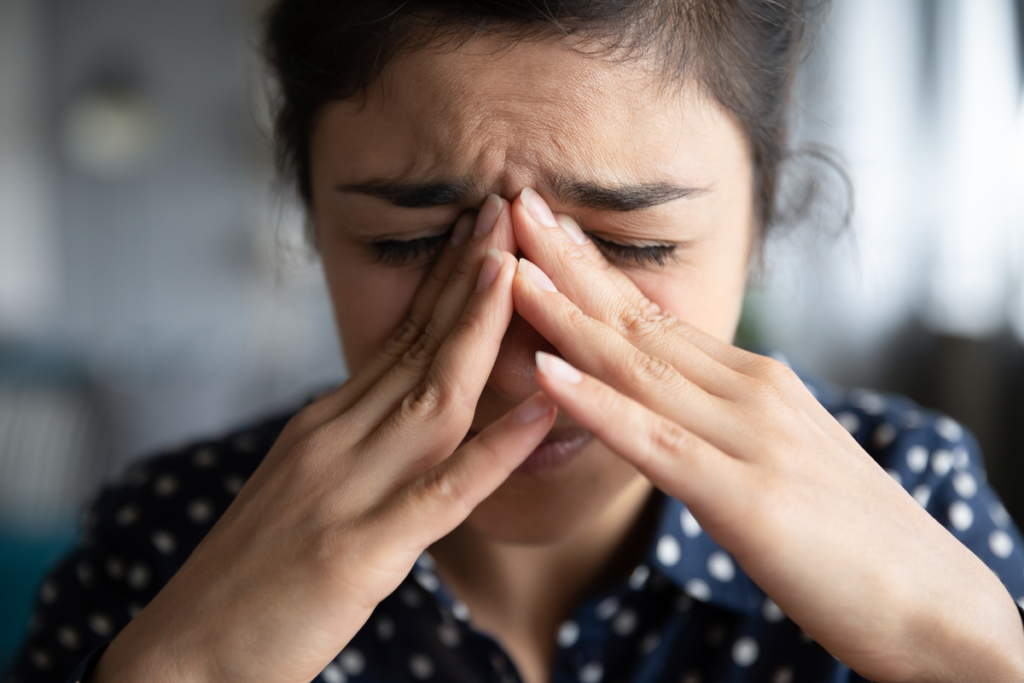The Differences Between Eustress and Distress


Written and verified by the psychologist Cristina Roda Rivera
The differences between eustress and distress are linked to their physiological correlates. Furthermore, you may be surprised to know that stress isn’t always bad.
In everyday life, we often use the term stress to describe negative situations. This leads many people to believe that all stress is bad, which isn’t true. As a matter of fact, stress is simply the body’s response to changes that create testing demands.
Dr. Richard S. Lazarus suggested that there’s a difference between eustress, which is a term for positive stress, and distress, which refers to negative stress. He based his theory on the works of Hans Selye.
Everyone will experience some kind of stress during their life. However, the two separate categories of eustress and distress must be distinguished. In this article, we’re going to explain what each one consists of and its impact on your health.
Stress
Stress is the body’s physiological response to stressors that create arduous demands and throw you off balance. A stressor can be a change, a threat, or a perceived pressure.
Stress is necessary for better survival. Indeed, many thousands of years ago, people needed the stress response to stay alive and fight against threats. Nowadays, the context is different, but stress still has a function.
The fight or flight response speeds up your heartbeat, blood pressure, and respiration rate, inhibits your digestion, and increases your blood sugar levels in order to provide energy to your muscles and focus your mind. This sequence of changes allows you to fight or flee from danger in stressful situations.
However, today, most of the types of stress you experience come from yourself. They tend to be psychological tensions and rumination. For example, when you perceive a threat, such as an upcoming exam or excessive job demands, you begin to feel stressed.

Eustress
Eustress is a relatively new concept that describes a positive, helpful, and motivating type of stress. Unlike distress, eustress motivates you to work, improve your performance, and achieve your goals, even in the face of challenges.
Both stress and distress activate the fight or flight response in your body and brain. The difference is, that in eustress, the energy generated is proportional to that demanded by the situation. On the other hand, with distress, the release of energy occurs in a more haphazard manner.
Whether you experience distress or eustress in a situation depends mainly on how you perceive both yourself and the stressor.
When you feel confident in your ability to overcome the stressor, you’re more likely to experience positive stress. This positive assessment of the stressor helps you channel the energy provided by the fight or flight response in ways that help you work on a solution.
Some ways to create eustress
- Trying something new, such as a hobby or activity with new people.
- Participating in physical performance activities.
- Undertaking new learning, such as a language or a work-related course.
- Setting challenging but realistic goals.
- Taking on a new responsibility at work.
- Organizing a social activity yourself.
However, while eustress is beneficial, it can turn into distress when a situation becomes too overwhelming or when other stressors occur at the same time. If this occurs, it’s advisable to use stress management techniques.
Distress
Distress describes the type of negative stress that you associate with feeling ‘stressed’. This type of response tends to make you feel overwhelmed, anxious, and to experience physical and psychological symptoms, such as headaches, tension, insomnia, inattention, or irritability.
Frequent, intense, or chronic stress is toxic to both the body and brain. In fact, it’s related to a series of physical illnesses and psychological disorders. It also affects your functional capacity.
The difference between stress and distress is associated with the stressors that trigger your response and how you evaluate them. Distress occurs when you assume that stressors aren’t under your control and you don’t have the ability to fix or change the situation.
When you experience distress, you tend to feel overwhelmed and helpless. This is because you haven’t found a viable solution, and you tend to continually worry and manifest other unproductive responses. Some of the most common sources of distress are as follows:
- Lack of money.
- Job dissatisfaction.
- Political climate.
- Future of the economy.
- Violence or crime.
- Technological media overload.
- Illness or physical health.
- Conflicts in social relationships or loneliness.
- Sleeping problems.
- Poor or unsatisfactory nutrition.
- Continuous moves.

Impact of distress
Distress often negatively impacts your mood, health, and functioning. When distress is chronic and recurrent in nature, increased cortisol levels can lead to a number of physical and psychological illnesses and problems. For example:
- Difficulty falling asleep or staying asleep.
- Physical pain or discomfort (such as headaches, stomach problems).
- Changes in appetite.
- Increased heart rate, respiration, and blood pressure.
- Difficulty concentrating or remembering things.
- Feeling nervous or restless.
- Frequent feelings of exhaustion.
- Racing or repetitive intrusive thoughts.
- Not feeling present or involved in activities and tasks.
- Irritability or lower tolerance to frustration.
- Increased anxiety.
The longer the distress lasts, the more severe the impacts and deficiencies become. Long-term exposure to negative stress is related to the following:
- Impaired functioning in one or more areas of life.
- Increased risk of mental illnesses such as anxiety and depression.
- Consumption of painkillers and anxiolytics on a chronic basis.
- Increased risk of illegal substance use disorders.
- Higher risk of chronic diseases, heart disease, and cancer.
- Increased mortality.
Most of us have felt distress in response to certain situations that are annoying or overwhelming, making total prevention an unrealistic goal. However, it’s possible to protect yourself against the negative effects of distress when it becomes unavoidable by using strategies that transform it into eustress.
All cited sources were thoroughly reviewed by our team to ensure their quality, reliability, currency, and validity. The bibliography of this article was considered reliable and of academic or scientific accuracy.
- Bevilacqua, Carlos (2015). ¿Qué hay de nuevo en distress ?. Revista Americana de Medicina Respiratoria, 15 (1), 89-90. [Fecha de Consulta 13 de Diciembre de 2021]. ISSN: 1852-1630. Disponible en: https://www.redalyc.org/articulo.oa?id=382138401017
- Kupriyanov R, Zhdanov R. The eustress concept: problems and outlooks. World Journal of Medical Sciences. 2014;11(2):179-185.
- Sandín B. El estrés. En: Belloch A, Sandín B, Ramos F, compiladores. Manual de psicopatología II. Madrid: McGraw-Hill; 1995. p. 3-52.
This text is provided for informational purposes only and does not replace consultation with a professional. If in doubt, consult your specialist.








